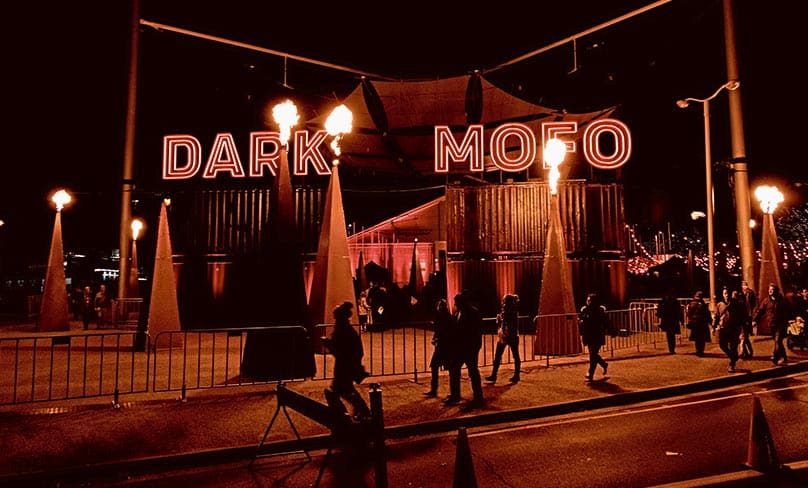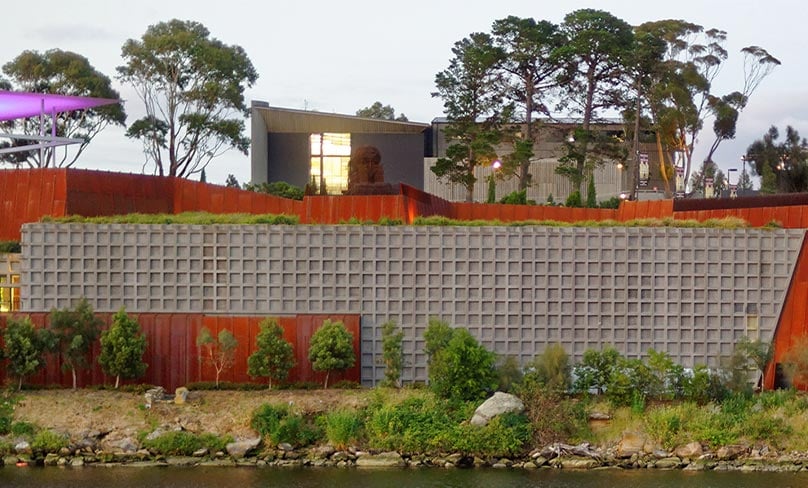
Catholics pray for their state in the midst of a festival of darkness
St Mary’s Cathedral in Hobart held a vigil of light last week as nearly 70,000 people flocked to the other side of the city to celebrate a festival of darkness known as Dark Mofo running from June 6-23.
Called the ‘Lighthouse’ vigils, the cathedral offered all-night Eucharistic adoration on three consecutive Fridays (7, 14 and 21 June) matching Dark Mofo which ran from 6-23 June.
Beginning with Mass at sundown, the vigils featured sacred music, the rosary, silent adoration, prayers of the Divine Mercy chaplet and Confession. Mass was offered at midnight and at the conclusion of each vigil.
“We are reminded that St Paul said that Christians are the ‘children of light’ and the Lord urged his disciples to be a light to the world,” said Archbishop Julian Porteous of the decision to organise the vigils.
“[Dark Mofo] is celebrated around the winter solstice and carries not only some pagan elements but also promotes the notion of darkness. The prevailing colours are black and dark red,” he told The Catholic Weekly.
“Christ is the light of the world … We have held an annual all-night vigil of the Blessed Sacrament in the cathedral to invoke the light of Christ upon the society here in Tasmania.
“I have been very encouraged by the numbers of those who have taken part, many choosing to pray through the night.”
The Hobart festival of darkness was founded by David Walsh, owner of Tasmanian gallery MONA (Museum of Old and New Art).
MONA has been at the centre of religious controversy on several occasions in the past, especially for hosting the ‘Piss Christ’ exhibition of photographs by Robert Mapplethorpe as well as exhibiting Australian euthanasia campaigner Dr Philip Nitschke’s ‘Death Machine,’ a device for those wishing to end their lives.
Now in its seventh year, Dark Mofo attracts local and international artists with a reputation for sailing beyond the avant garde into areas of fetishism, the bizarre and the occult.
However critics say the revolting and blasphemous are not just fringe elements but at the heart of the festival. This year’s Mofo, designed by Lee Carmichael, promises to be darker than ever.

Dark Festival entertainment fosters an unhealthy culture
In 2018, over 2,500 festival attendees lined up for a free show to watch Austrian ‘artist’ Hermann Nitsch slaughter a live bull, while 12 acolytes disrobed and writhed within the bull’s intestines. These were then mock crucified naked and covered in the animals’ blood. Audience reactions ranged from disgust to positive.
This year’s entertainment schedule included watching an artist simulate beating someone to death on a street, afternoon tea and scones laced with Indigenous blood, a mock Confessional, death-metal bands playing ‘Hymns to the Dead’, strolling a two-kilometre ‘Dark Path’ to the sound of primal screaming, a nude winter solstice swim (booked out) and a Balinese pagan ritual burning a statue of a parrot.
Audience members were encouraged to write down their anxieties and place it in the belly of the parrot, while exhibits at the Black Temple Gallery (a former heritage-listed church) were described as “psychosexual.” Post-event parties were termed ‘Night Mass’.
Some Tasmanians have opposed Dark Mofo. In 2018, Hobart Mayor Ron Christie said he wished to “put the brakes” on the festival over concerns it fostered an “unhealthy culture”.
However the festival has been popular in Tasmania.
“You can’t talk to people in a rational sense about the festival,” said one Catholic living in Hobart who did not wish to be named.
“If you have an opposing view, you are immediately labelled as being anti-everything.
“The attitude is divided between locals asking, ‘what harm can it do? It’s great for the economy’ and the other half, who never attend, couldn’t care less,” he said.
The festival receives $280,000 annually from the Hobart City Council, which allows full access to city spaces including the Botanic Gardens and waterfront for performances and events.
Public monuments are lit red for the festival. In 2018, the Tasmanian Government pledged $10.5 million over five years, and put aside $3.8 million in the 2019 budget as its contribution to Dark Mofo.
Tasmania’s leading paper, The Mercury, runs daily reviews and guides. The newspaper has even changed its Facebook banner to a street scape of Hobart dominated eerily by a 5-meter tall neon red cross. Dark Mofo is estimated to bring $50 million annually to the city
In May this year, a further $2 million in state funding was given to Mona’s subsidiary, DarkLab, to install a 12-month installation at Hastings Caves.
Less than a month later, on 5 June DarkLab opened a 24-hour precinct in the CBD, described as ‘In the Hanging Garden.’
